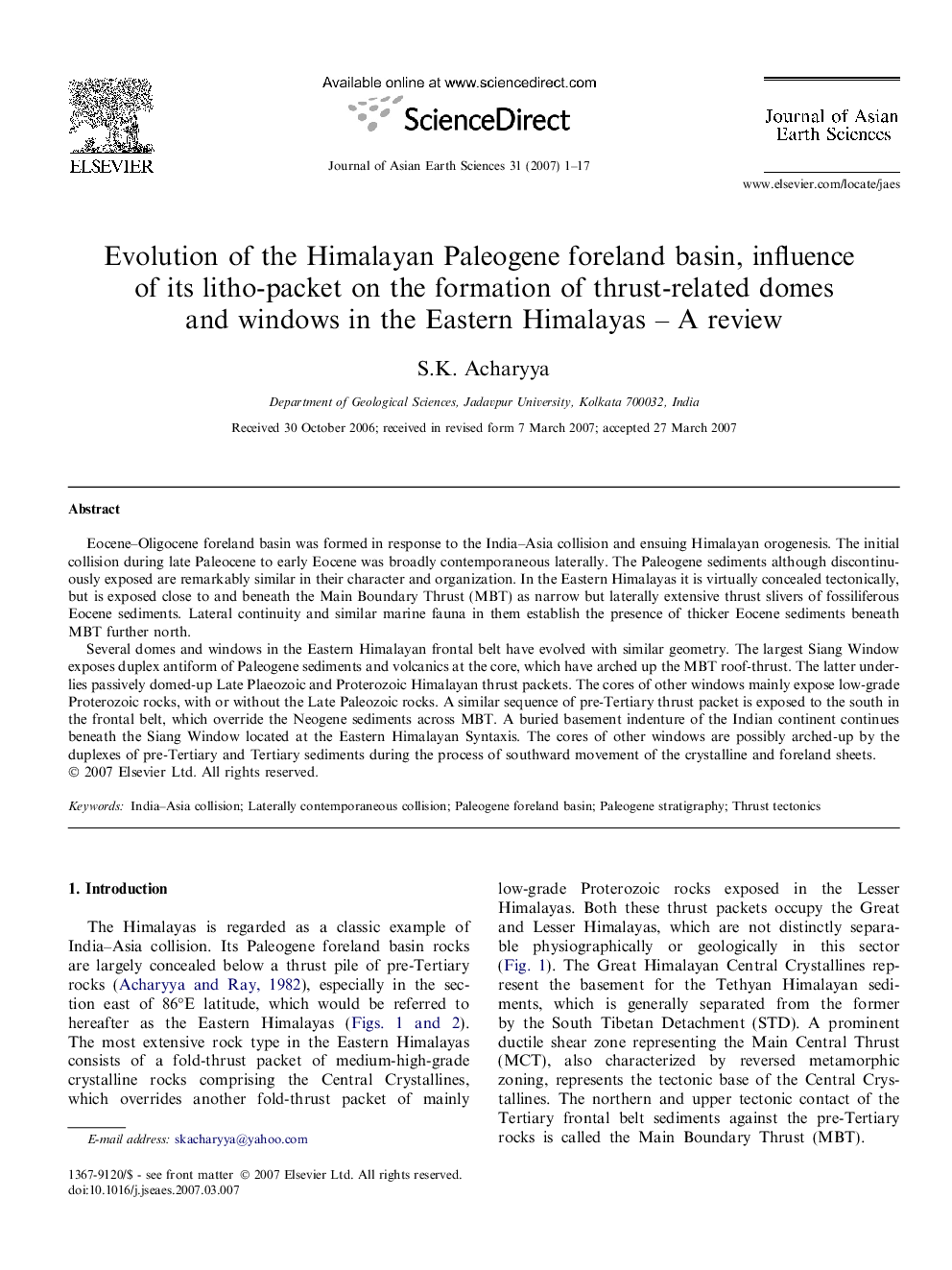| Article ID | Journal | Published Year | Pages | File Type |
|---|---|---|---|---|
| 4732752 | Journal of Asian Earth Sciences | 2007 | 17 Pages |
Eocene–Oligocene foreland basin was formed in response to the India–Asia collision and ensuing Himalayan orogenesis. The initial collision during late Paleocene to early Eocene was broadly contemporaneous laterally. The Paleogene sediments although discontinuously exposed are remarkably similar in their character and organization. In the Eastern Himalayas it is virtually concealed tectonically, but is exposed close to and beneath the Main Boundary Thrust (MBT) as narrow but laterally extensive thrust slivers of fossiliferous Eocene sediments. Lateral continuity and similar marine fauna in them establish the presence of thicker Eocene sediments beneath MBT further north.Several domes and windows in the Eastern Himalayan frontal belt have evolved with similar geometry. The largest Siang Window exposes duplex antiform of Paleogene sediments and volcanics at the core, which have arched up the MBT roof-thrust. The latter underlies passively domed-up Late Plaeozoic and Proterozoic Himalayan thrust packets. The cores of other windows mainly expose low-grade Proterozoic rocks, with or without the Late Paleozoic rocks. A similar sequence of pre-Tertiary thrust packet is exposed to the south in the frontal belt, which override the Neogene sediments across MBT. A buried basement indenture of the Indian continent continues beneath the Siang Window located at the Eastern Himalayan Syntaxis. The cores of other windows are possibly arched-up by the duplexes of pre-Tertiary and Tertiary sediments during the process of southward movement of the crystalline and foreland sheets.
